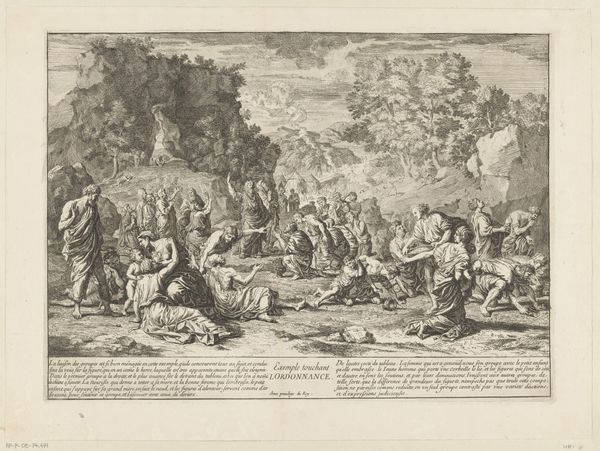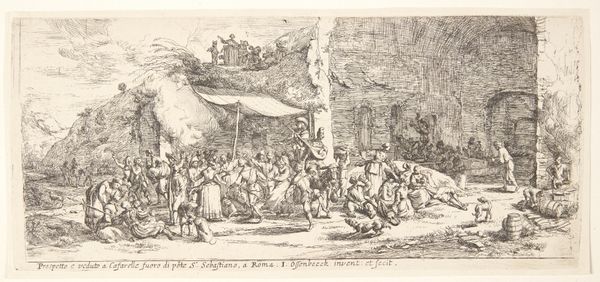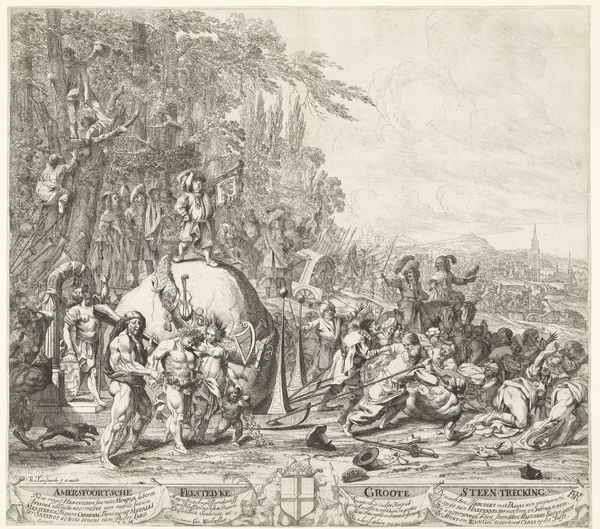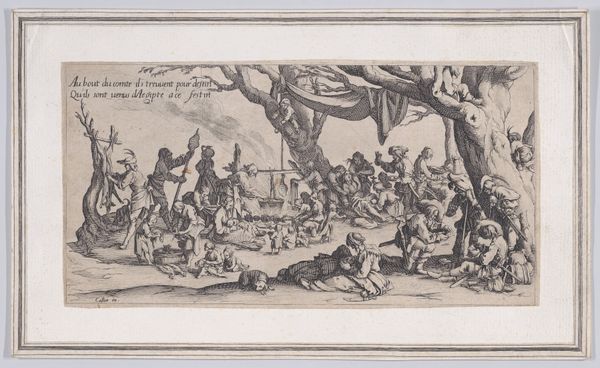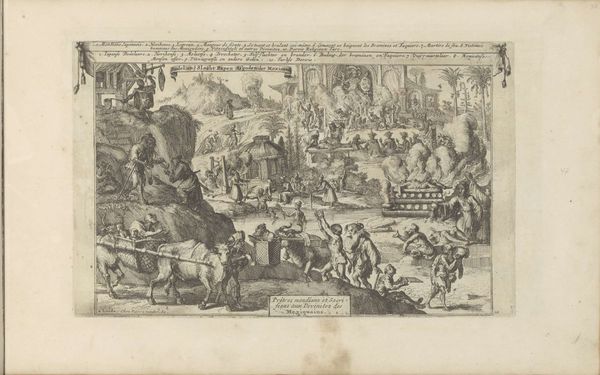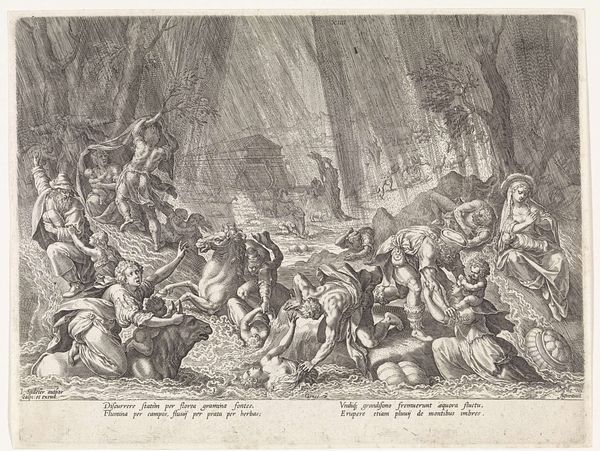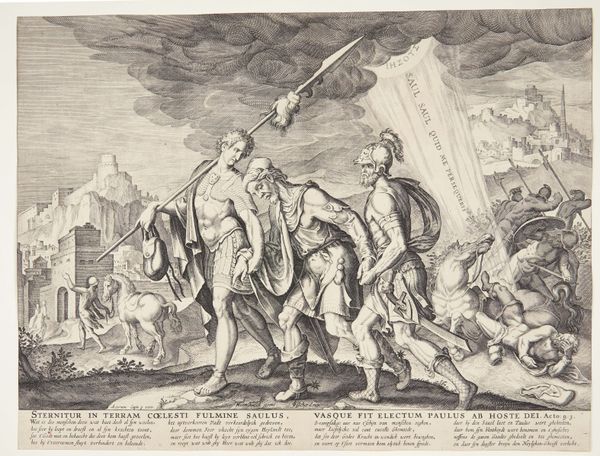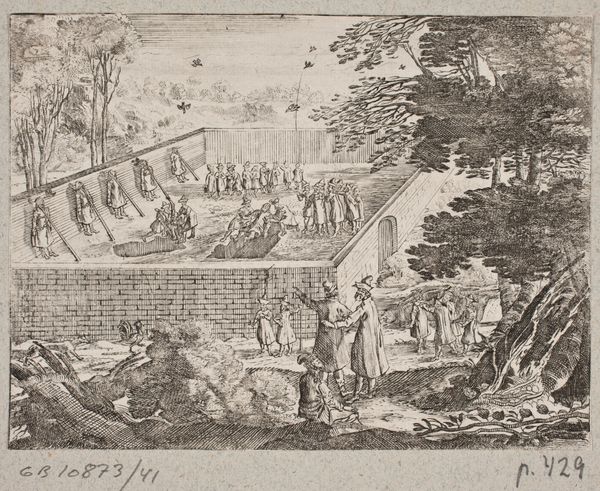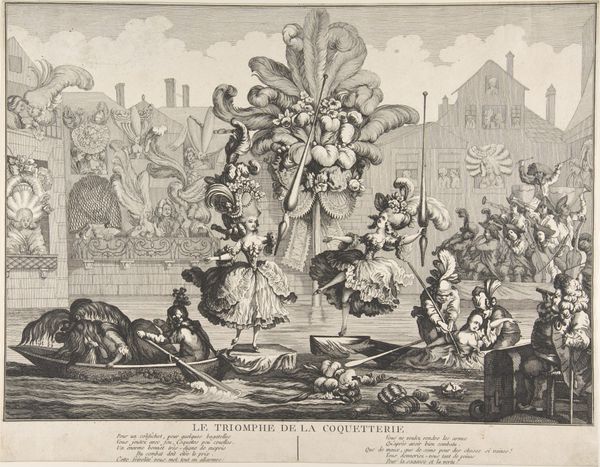
drawing, print, etching, engraving
#
drawing
#
ink drawing
#
allegory
#
narrative-art
#
baroque
# print
#
etching
#
fantasy-art
#
history-painting
#
engraving
Dimensions: sheet: 10 3/16 x 13 11/16 in. (25.8 x 34.7 cm) image: 9 9/16 x 13 1/16 in. (24.3 x 33.2 cm)
Copyright: Public Domain
Curator: Welcome! Before us is the etching and engraving “Est-ce un enchantment...” by Claude Gillot, dating sometime between 1685 and 1722. It depicts what seems to be a rather fantastical scene. Editor: That’s one way to put it! My first impression is sheer bewilderment. There's so much happening! The line work is incredibly intricate, giving a dense and chaotic feel, a bit like an alchemical drawing. Curator: Indeed. Considering Gillot’s connections to the theatre, and his interest in Commedia dell'arte, we can view this chaotic scene as a kind of theatrical representation of superstition. The performance of dark rituals has, in the right socio-political circumstances, long held an influence in the European imagination, and artworks like this only work to confirm that fascination. Editor: I am struck by the materiality. The use of etching and engraving to create such fine lines allows for a level of detail that evokes the bizarre imagery associated with witchcraft and folklore, a sort of commentary on the artistic labor that goes into crafting belief. Look at how the various elements - the monsters, the tortured figure, the tools - all rendered with meticulous detail – it's a true feast for the eye! Curator: And don't forget the written element—lines of poetry, framing the scene. That’s an interesting material fact in itself: the literary, textual construction combined with the image-making both reinforced certain social realities while opening doors to imagined or spiritual realms. Editor: Yes, that text provides a context and serves to normalize it for consumption by a contemporary audience—or perhaps offer a subtle critique. It’s interesting to consider how prints like this circulated, were they mere curiosities for the wealthy, or did they influence popular perceptions of those deemed heretical? Curator: Exactly! The politics of imagery here are clear: associating witchcraft with the spectacle, with theatre, and with the monstrous works as a very clear ideological messaging technique. The museum frames and gives that messaging a new life, a continued resonance within contemporary debates. Editor: Absolutely, it allows us to ask what kind of labor went into creating this representation? And to whose benefit? Looking closely makes me aware of my own contemporary biases about consumption and display, while inviting a renewed respect for Gillot's craftsmanship. Curator: Reflecting on this piece, it is impossible not to notice its potent influence on later artists engaged with social commentary through satirical printmaking. Editor: I’m struck most of all by how close looking draws us into this work, exposing layers of context and challenging simple readings, all thanks to an enduring combination of ink, metal, and imagination.
Comments
No comments
Be the first to comment and join the conversation on the ultimate creative platform.
